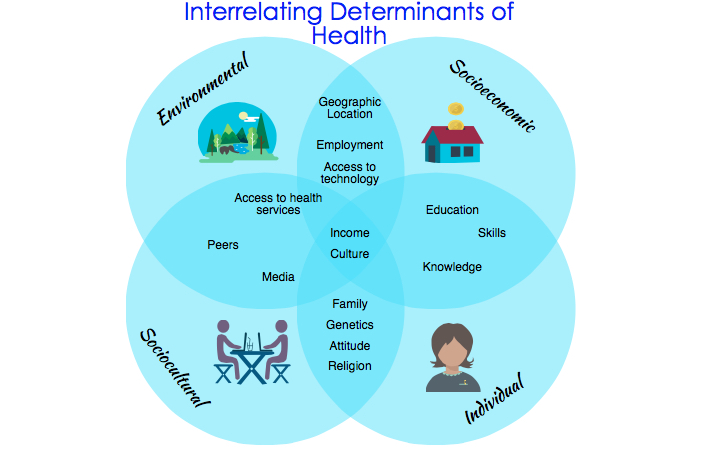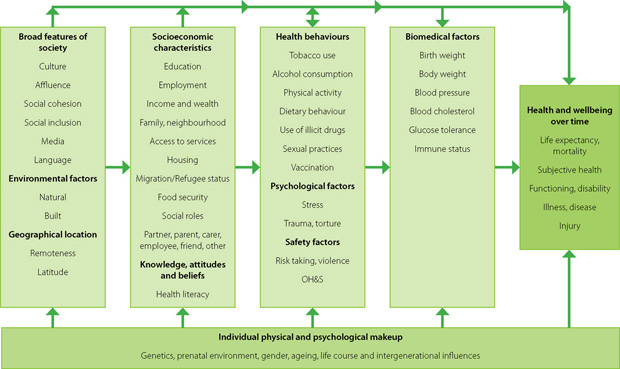In order to understand that health is a social construct a student recognises the interrelationship of the determinants. The interrelationship of the determinants has been touched on previously, looking at various factors that work in combination to determine health. It is important to understand exactly how these determinants interact with each other and affect one another. This then has a cumulative affect on the individual as the determinants interact and relate to one another.
Every determinant of health affects another, often more than one. The four (4) categories of determinants overlap with one another as they interrelate to determine the health of an individual.
Environmental factors, such as your geographical location affect your health on their own, but they also affect other determinants of health. For example, your geographical location can limit or increase your employment and educational options. It can also improve your access to health services, affect your peer group and media exposure.
Socioeconomic factors also interrelate to other determinants. Your level of education will impact your employment options and can limit or increase you options for geographic location as you need to be able to afford where you live. Your education will also affect your knowledge and skill levels for accessing and understanding health and health services. Socioeconomic factors can determine your peer groups, as you may or may not be able to afford to do the activities around which people socialise. Your education can affect your income and your access to health services and technology, especially when considering elective surgery or ancillary care (non-medical care, e.g. physiotherapy, dental care etc).
Sociocultural factors will also interrelate with determinants of health. Your family will at various stages in your life affect your peer group, income, geographic location, genetics, attitude towards health, religion, access to technology or health services and more.
Finally individual factors, such as knowledge and skill levels will greatly impact your choice of employment and can affect your level of education. It can then affect you geographic location and ability to access or navigate the health care industry.
It is important that a student recognises the interrelationship of determinants. With such knowledge it becomes easier to understand that health is a social construct, and to identify that an individual is not solely responsible for their health. Whenever someone recognises the interrelationship of determinants they are acknowledging that health is a much greater and more complex issue than it is often thought.
The World Health Organisation recognises the interrelationship of determinants as well. This is why it has a wider definition of health and developed the Ottawa Charter in 1986, which has action areas that help to improve as many determinants of health as possible, rather than simply leave health as the individuals responsibility.


